Have you ever wondered why people always run to the nearest gas station in movies during emergencies?
It is because gasoline is one of the most valuable resources for survival when SHTF. It can power cars, machinery, and generators.
And can be a significant source of fire for cooking and bonfire as a source of heat.
Quick Navigation
What Does It Mean to Siphon Gas?
Reasons Why People Siphon Gas
How Siphoning Works: The Science Behind It
How does it work?
Three Methods on How to Siphon Gas
FAQs
|
However, when worse comes to worst, what is the best way to have a stock of gas? What will you do when the situation does not allow you to go to a gas station?
The best option you can choose on the table is to perform siphoning.
If you are in this article to know how to siphon gas, then you have come into the right place. Below is a step-by-step guide in learning what siphoning is, its process, and how to do it properly.
What Does It Mean to Siphon Gas?
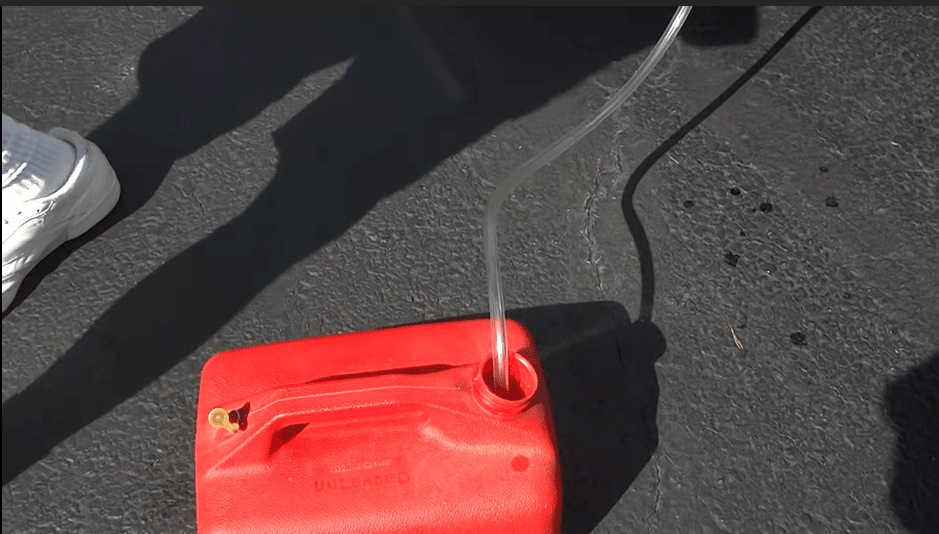
jmdracing
When people hear “fuel siphoning,” they always associate it with an illegal act. Criminals are using this method to steal gas from other people’s cars. However, siphoning gas is not just a thief thing. It is a vital skill.
Basically, siphoning is the process of taking out gasoline from a car tank. It is usually done with the help of a tube or pipe.
It’s one of the critical skills that you should learn for survival. However, take note that it’s not an overnight skill you can gain. It requires ample knowledge and practice.
Reasons Why People Siphon Gas
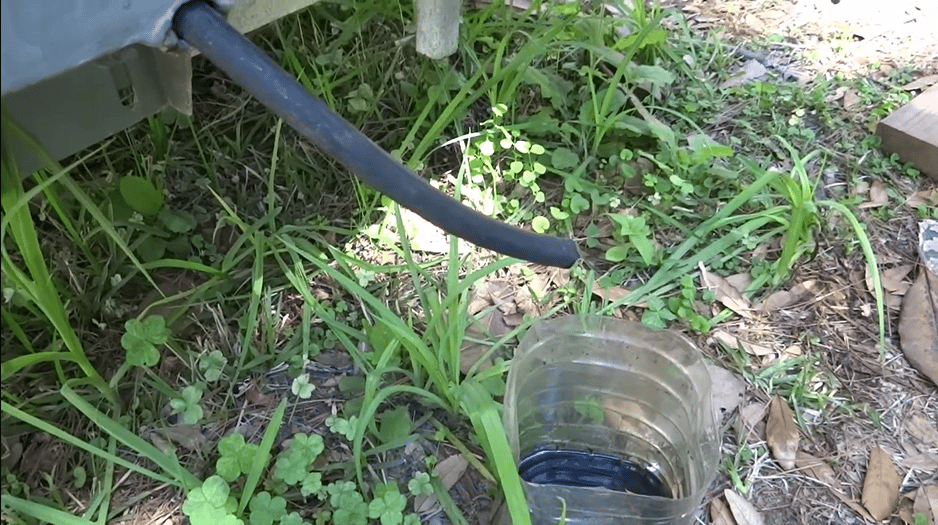
Anastasia’s River
As mentioned earlier, siphoning is a survival skill. However, its benefits are not exclusive only to life and death situations. There are instances where siphoning offers convenience too!
Here are some cases where your skill in siphoning fuel can be of great use:
1. You run out of gas during a trip
There are times when you suddenly run out of fuel when driving. That would be fine when there is a gasoline station around the area. But what will you do if there is none, or the next one is situated miles away from you?
All you need is another car that you may flag down along the highway and your siphoning skills, and then you are good to go. You need a bit of fuel that will keep you moving onto the next gas pump.
2. A major disaster hit your area
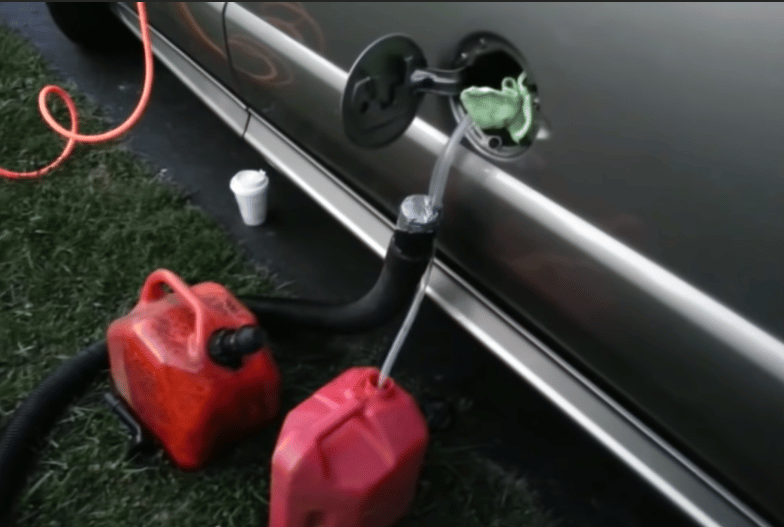
jimsimm11
During the post-apocalyptic situation, gasoline will increase in demand and value. However, the disaster will most likely make this high-value commodity less accessible to the people. This is where your skill in siphoning comes in. It will be your survival advantage and key to safely accessing other gas reservoirs.
Abandoned cars by the roadside can be a substantial source of gas. It might not seem acceptable or suitable to you, but whenever an SHTF situation kicks in, you need to prioritize the welfare of your loved ones. Acquiring fuel means survival. It can power a generator for electricity or other machines important for your family.
It also means that after a dangerous disaster occurs, you can bring your family to a safer place along with your survival kit using your car. Siphoning gas will give you a chance to escape before another wave or aftershock happens.
3. During freezing seasons
It is better to empty all gas tanks of your machinery during winters, including cars, lawnmowers, and generators placed in unheated sheds or exposed outside. There is a superior chance that your machines will not work if you cannot extract the fuel out of them.
Take note that gasoline can freeze at a specific temperature. It is because gas can undergo condensation during cold seasons. When gas turns solid, it may clog the gas lines preventing your car from starting.
Therefore, if you live in a place where winters are very harsh, we recommend you buy proper siphon devices. It is better to take this precautionary step than to let your fuel-operated devices malfunction. It may cause you a fortune to replace them.
How Siphoning Works: The Science Behind It
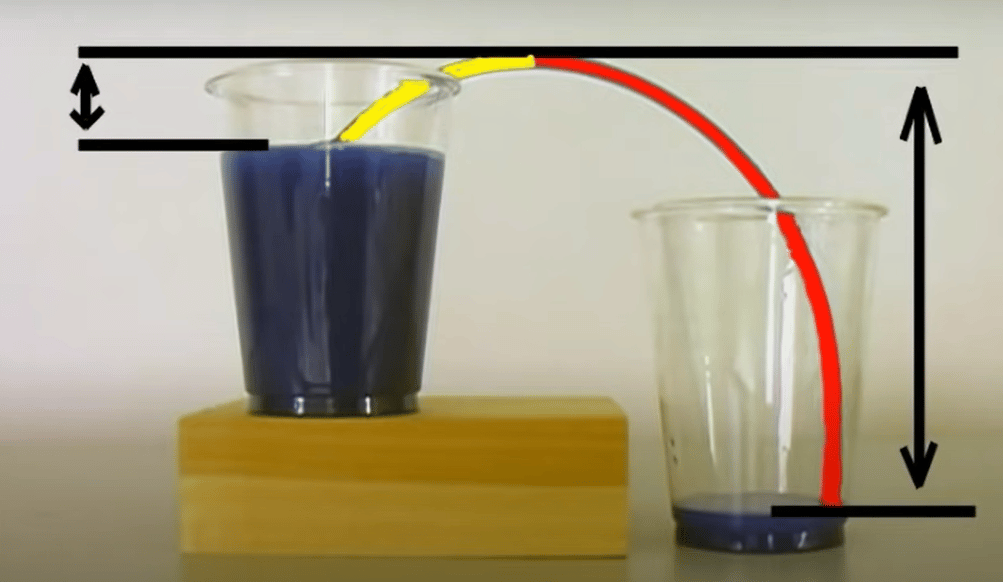
ScienceOnline
People usually use siphoning to transfer water from one reservoir to another or take out liquid from tanks with no outlet. Almost all liquids can be siphoned; thus, it is limited to gas.
To better understand the next section of this article, let us first define the crucial terms used in siphoning.
Siphon
A siphon is a tube or a long bent pipe that serves as a tool to transfer the liquid from one container to another.
Reservoir
The reservoir is the term used for the liquid containers. There are two reservoir types during siphoning–the higher level and the lower level. The higher level reservoir is where your liquid came from, for instance, the car gas tank. The lower level reservoir is where you will transfer the gas.
Summit
The highest point of the siphon is the summit. The section of the pipe or tube is not submerged into the liquid. To move the gas from the higher level reservoir to the lower level one, you should ensure that the pressure at the summit is less than the atmospheric pressure.
How Does It Work?
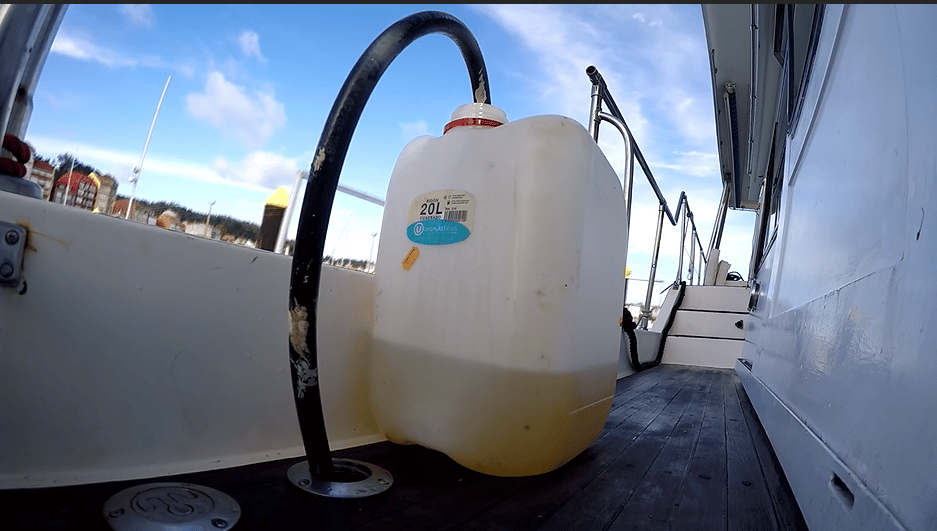
Halcyon Yachts – International Yacht Delivery
Three variables can make siphoning possible: gravity, liquid cohesion, and air pressure. Commonly, gas siphoning starts with placing the tube inside the gas tank and the other end into an empty reservoir. By adding air pressure to the outer end of the tube, you will allow the air pressure inside the tank to push the liquid out. Because of the cohesive nature of fluids, the gas will start flowing out from the tank.
Safety Precautions
In trying to siphon gas, always remember it is a hazardous chemical. It would be best if you handled it with caution to avoid accidents and untoward incidents from happening. Here are the things that you should note during the process:
Do not use fire or cigarettes
Gas is highly flammable and can ignite, even at room temperature. It has the ability to evaporate, and its vapor mixed with the air can be a form of explosive. Avoid using cigarettes when siphoning as its embers can cause this compound to cause potential fires.
Wear a respirator mask
Too much breathing of gasoline vapors might cause you to have nausea, dizziness, breathing difficulty, or headaches. Fumes can knock you out in an instant. In worst-case scenarios, gasoline can poison you or lead to organ damage, especially the lungs. To avoid these undesirable things, use proper respirator masks to filter fumes, such as the N95.
Do not use the mouth-suction method
The Mouth-suction method is one way to perform gas siphoning. However, we do not recommend this one. In performing this type of siphoning method, you are subjecting yourself to accidental gasoline ingestion. Instead of siphoning to survive, this might lead to your end.
According to Medical News Today, the stomach is not as fast as the lungs absorbing gasoline. However, gasoline ingestion is fatal. In adults, taking in 20 to 50 grams of this compound can lead to having severe intoxication. And, gulping around 350 grams can lead a 70-kilogram human to die.
In instances where you unintentionally ingest gasoline, ask for medical attention right away regardless of its amount.
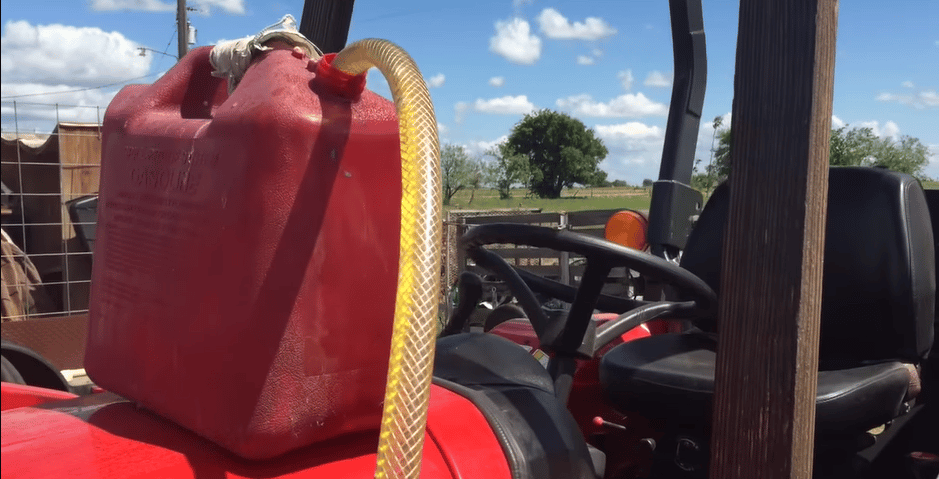
Estes Ranch
Be knowledgeable of the parts of the vehicle you are siphoning
Before heading straight to siphoning gas out of a vehicle, know whether it is a new or old model. Old cars rarely have safety features built between the nozzle and the car’s gas tank. Be careful since you may not control the gas flow.
On the other hand, there are complex types of modern cars. There are ones manufactured with built-in anti-siphon devices to deal with fuel thieves. Indeed, it is one of the safety features that prevent people from stealing your gasoline. Yet it may cause delay during emergencies and survival scenarios where you direly need to siphon gas.
One best way to open the barriers is a screwdriver or a multi-tool. It can be time-consuming, but it can help you unlock the anti-siphoning flap.
Three Methods on How to Siphon Gas
Now let us head on to the significant part, the process of siphoning gas. There are three primary methods to siphon gas. Read on for you to know the step-by-step process of each way and their respective pros and cons.
1. Pressure Method
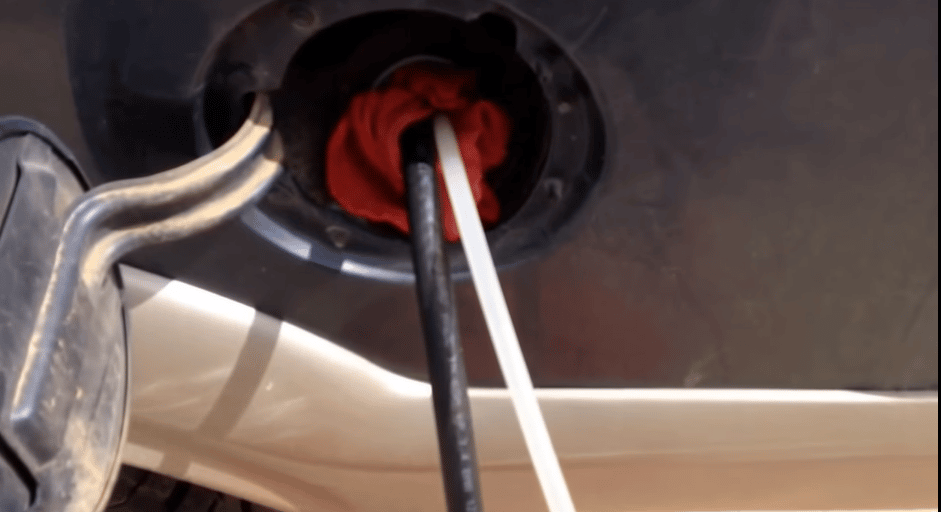
Keto Kevin
In this method, you will need:
- Two hoses – these should have two lengths that vary from one another. There should be a longer tube and a shorter tube. Tubes can be made of plastic or rubber as long as it can act as a pipe or tube. It should be around 1 inch in diameter to let the gasoline flow without constrictions.
- Rag
- Empty gas container
Step 1
Before doing the siphoning, first, you need to assign labels to the two hoses. You can name them hose 1 (long tube) and hose 2 (short tube) to avoid confusion.
In placing the hoses into the gas tank, note that hose 1 should reach its way to the bottom-most part of the gas tank. Meanwhile, you should only slightly submerge hose 2 enough to reach the gas inside the tank.
What will occur is that you will pressurize the tank with hose 2. Then hose 1 (longer one) will vacuum all the gasoline upwards.
Step 2
After placing hose 2 into the gas tank, grab your rag and start tying the two siphon hose together. In this process, make sure that the rag is close enough to the mouth of the gas tank. The rag should act as a gas cap that tightly seals the mouth. Try to stick the rest of the rag on the outlet sufficient to prevent the air from circulating in and out of the tank. We recommend you should wet the cloth beforehand.
Step 3
Prepare your gas container. Take the other end of hose 1 and place it inside the canister. Place it lower below the level of the gas tank. Do not put the other end of the
Step 4
Start blowing air into the other end of hose 2. It will increase the pressure inside the tank, making the gasoline rise and flow into the hose 1. In doing this step, you can use an air pump if you are not comfortable using your mouth to blow air.
Step 5
Observe hose 1 second after blowing air into hose 2, the gasoline from hose 1 should flow. If you think that you have already siphoned the desired amount of gas, take out the second end of hose 1 from the canister. Place your thumb to stop the outflow. Lift it as high as possible, then release your thumb to let the fluid flow back into the fuel tank.
2. Pumping Method

Senzeal Auto
In this method, you will need:
- Gas siphon pump or gas siphoning kit- you can buy it online or in a hardware store such as Home Depot. They sometimes refer to it as a liquid transfer pump.
Step 1
Get the siphon pump tubing. Insert one end of your container and the other end into the bottom of the gas tank. Make sure that you place your container lower than the fuel tank level.
Step 2
Note that each gas siphoning may vary from one model to another. To avoid confusion, always refer to the cheat sheet or the manual that goes along with siphon kits. Follow the instructions all the time before starting pumping.
Step 3
Now you start pumping. This step might be crucial since you need to know the right direction that the siphon pump should face. Usually, two tubes are attached to the siphon pump, the one that sucks the gas out and the other tube, an outlet placed into the container. If you do this step incorrectly, you might fill air into the container instead of fuel.
Step 4
After pumping all the gas from the tank, remove the siphon hose. You can use an air pump to blow the remaining gas from the tubing. Wipe the siphon pump with a clean damp cloth or rinse it after usage.
3. Mouth Suction Method
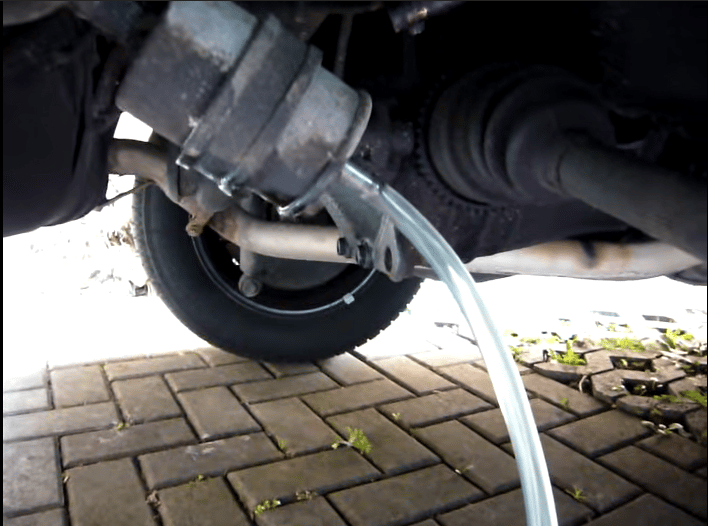
ichgebgas
Among the three methods, this last one is the most dangerous way to siphon gas. Yet, still many people are performing this. If you are not cautious enough, gasoline poisoning might happen when you accidentally take a gulp of the compound.
In this method, you will need:
- Hose or a clear tubing
- Empty container or a gas canister
- And of course, your mouth.
Step 1
The first step to do is to place the end of the clear tubing inside your gas tank. Blow some air on the other end to know whether you submerged the other end into the tank. An indicator that you did this right is when you hear the liquid bubbling.
Step 2
Place the empty container on the ground. Make sure that it is in a place lower than the level of the fuel tank.
Step 3
After step 2, get the other end of the tube and start using your mouth as a suction. The process should look like you are sucking your favorite drink out through a straw. However, this time it is a bigger one. In suctioning the gas using your mouth, do it in one go. When you see the liquid flow out, take the tubing out of your mouth.
Step 4
There is one way to exhibit safety measures with this method. Try crimping or using your thumb to interrupt the gas from spilling out before you transfer the tube to the empty container.
Step 5
After siphoning the desirable amount of gas from the tank, take out the end of the tube attached to the fuel tank to stop siphoning.
Remember that the mouth-suction method of siphoning gas is only recommended during life and death situations. Yet, if it can still wait, do not immerse yourself in this hazardous act. Do the two previous methods instead.
FAQs
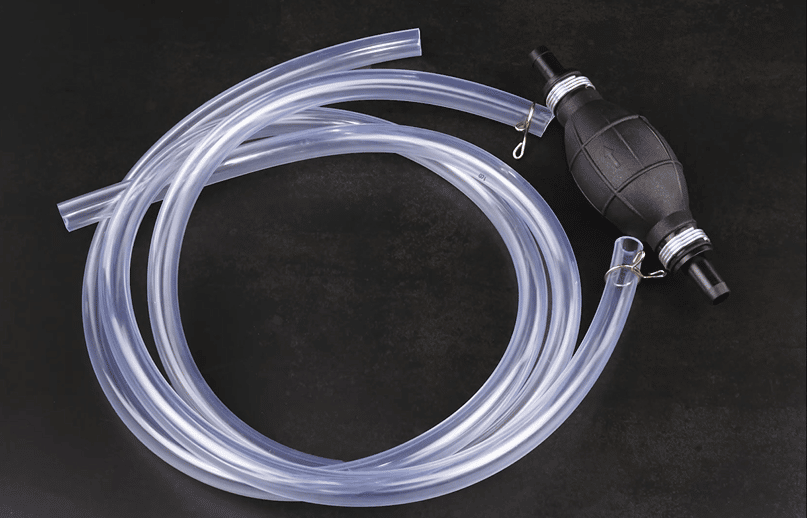
Motrix Elysium
Here are other related questions we answered for you:
What happens when my skin and eyes get in contact with gasoline?
Human skin may have different reactions when exposed to gasoline, but here are the most common symptoms:
- Pus-like discharge
- Loss of vision (temporary)
- Eye pain
- Skin peeling and blistering
- Skin inflammation
- Skin irritation (mild)
Can you die from siphoning gas?
In the worst-case scenarios like swallowing gasoline too much, ignition and causing flames, too much exposure to vapors, yes, you can die from siphoning fuel. However, the mentioned scenarios can be prevented when you observe precautionary and safety measures mentioned previously in this article.
How long does it take to siphon gas?
The answer is, it depends. There are several variables that may affect the duration of the entire process, such as:
- The diameter of your siphon hose
- The amount of gas you want to extract from the fuel tank
- The length of the siphon hose
- The height of the fuel tank from the empty container
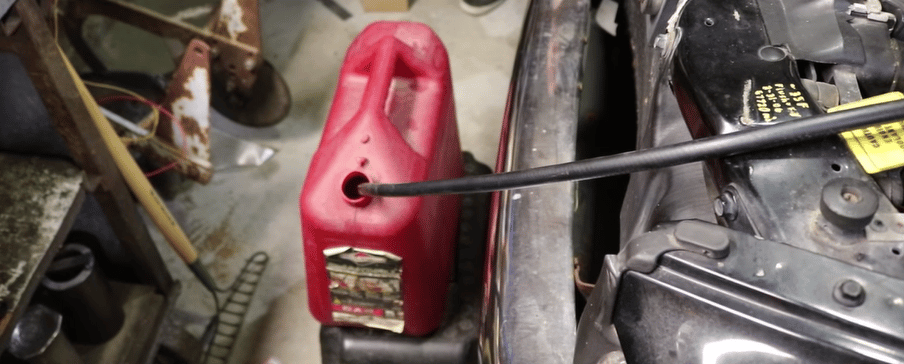
Bill The Tractor Man
The post A Step-by-Step Guide on How To Siphon Gas for Emergencies appeared first on GeekPrepper.
By: Tobias
Title: A Step-by-Step Guide on How To Siphon Gas for Emergencies
Sourced From: geekprepper.com/how-to-siphon-gas/
Published Date: Thu, 10 Feb 2022 17:20:58 +0000
-------------------------------------------------------------------------
Did you miss our previous article...
https://outdoorsnewswire.com/survivalist/how-to-build-a-wilderness-survival-shelter-free-bushcraft-skills-wilderness-survival-shelter-checklist
 CampingSurvivalistHuntingFishingExploringHikingPrivacy PolicyTerms And Conditions
CampingSurvivalistHuntingFishingExploringHikingPrivacy PolicyTerms And Conditions
